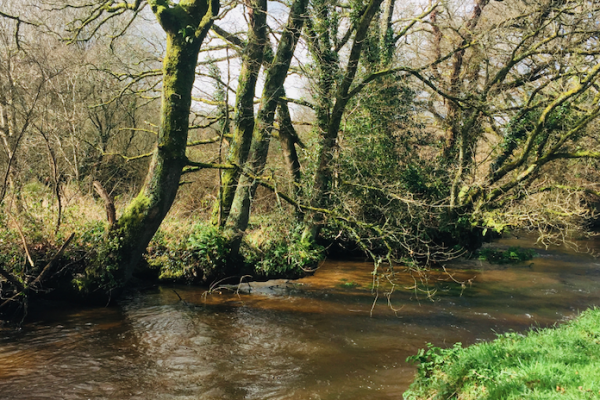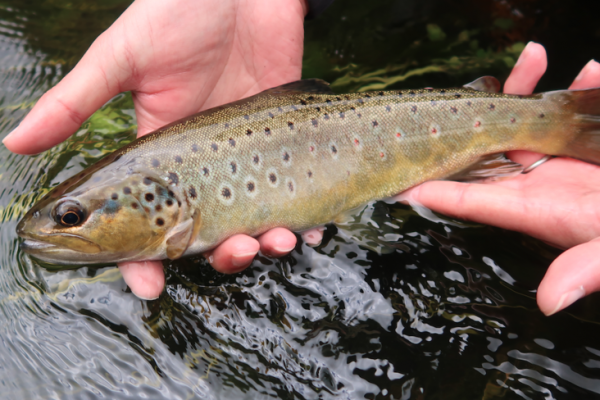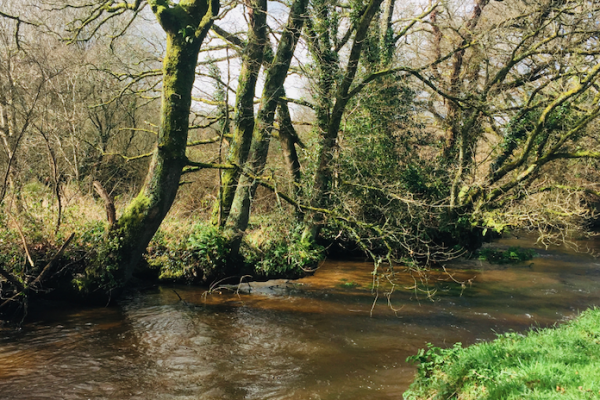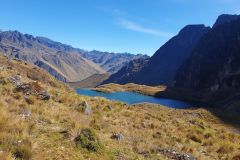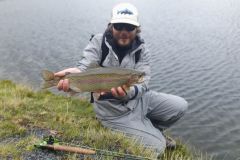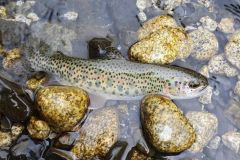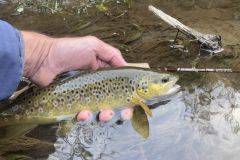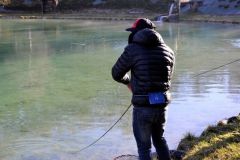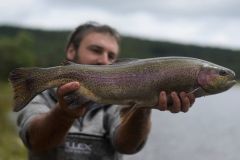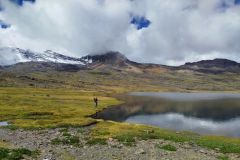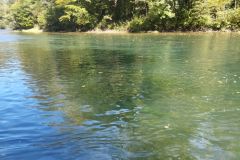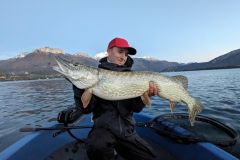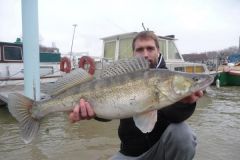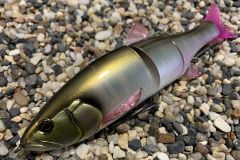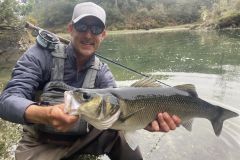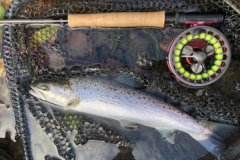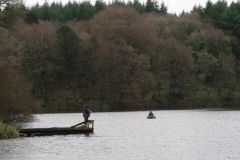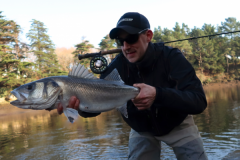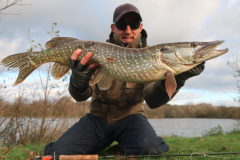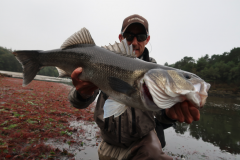Like last year, we had a lot of rain just before the opening weekend. This is a good omen for the future, but as a result conditions are difficult on most of the Breton rivers with high, tinted and cold water.
I will go to the headwaters to find clearer water and to make my first trout of the year.
There is no point in running, you have to start on time!
With the heavy rains, we will have to wait until late morning to find less tinted waters.
In any case, in this season, the trout are not very active and it is often at the hottest hours that you have to be present on the water.
So I arrive on the high jet around 11:30 to be ready to fish between 12:00 and 16:00.
I start with the streamer and from the first casts, I will hook a first trout of average size which will come on a minnow imitation mounted on a slow plunging point in order to fish hollow and gently.
I will take two more good taps, but without biting the fish. The waters are clearing up so I will change my technique to pass slowly and close to the bottom, as the trout are often quite lethargic and not very active.
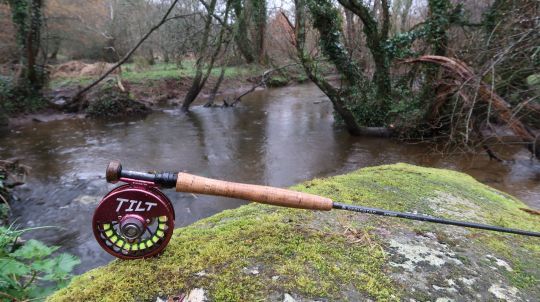
Nymph fishing with a line to fish each position slowly
For nymphing, I use a Redington Strike 10 foot long rod with 2 or 3 silk, rigged with only pink colored line (Glow maxima in 18°). Then I mount a 50-60 cm section of transparent nylon of the same diameter to make a visual break, then underneath, a short 30 cm strand of Rio two-tone as a touch indicator. On the tip, I put a 15° strand depending on the depth of the fishing.
These long rods allow you to control the drift of the nymphs and to cast at greater distances.
The important thing is to choose the weight of the nymphs according to the depth of each spot and the speed of the current. It is therefore necessary to constantly change the fly to pass as it should.
I'm tying an ORL with orange tag and mounted on a 3mm tungsten copper bead. It is a very good early season fly with which I fished very well at the opening last year.
As soon as the first passages, I take my first trout of the season. A wild Breton fario, of small size certainly (18 cm), but magnificent. And it is the first of the year! Quickly, I touch some fish that make me happy. I alternate and change the weight of the fly, but keep this hare pattern which is very catching and allows to slow down the drift while offering a nice bite.

Difficult conditions for fly fishing
After this first session on Saturday, on Sunday I go back at the same time.
I chose one of my favorite courses three minutes from my home still on the Jet. The water has dropped and cleared up nicely. I decide to fish only with NAF (nymph on wire) like yesterday. The levels being quite low for the season, the nymph should work well.
After fishing for 30 minutes without a single hit, an angler goes down every run I had planned to make on the way to me. With these levels, the trout are sure to go to ground. But that's also the opening. We are seldom alone, and we have to make with it! We discuss a little, and as yesterday, fishing seems complicated for everybody. It is normal, moreover this year, it made cold the night, the levels make the yo-yo and the conditions are not ideal. But it doesn't matter, the pleasure of being at the water's edge is there and that's the most important.
I fish slowly and prospect mostly the slower parts of the current, the slow and deeper currents, the edges. As an old fisherman would say, always fish the slowest of the fast and the fastest of the slow. That's where the fish often hang out.
Still no hit after one hour of fishing. I often change the weight and the pattern of the nymph, but nothing happens. I don't see any fish leaving in front of me either. Maybe they are not out there.
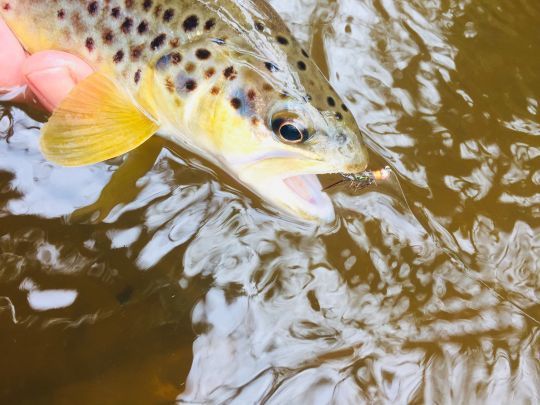
Getting back on track
Then in a nice deep hole, my indicator slows down. Reflexive clamping. It is at the end and jumps several times. The first "pretty" of the season with a fish in the 25/26 cm. It's a nice trout for this sector which is between 4 and 7 m wide. They are leaner than last year at the same time. The winter has been colder and it is time for them to regain their strength.
A parr (young salmon) will also come to take my nymph a little later, but the activity seems very calm. It is also necessary to take again its marks to fish just. Not easy today with the wind which hinders the drifts and the constant precipitations since the beginning of the afternoon. The line is sticking to the rod and the casts are less accurate.
After a quick lunch break, around 1:30 pm I leave again for 2 hours before meeting the family. I will land a first fish of good size by jumping several times! With a barbless hook, it happens more often. A beautiful fish between 28 and 30 cm.
The shots are not easy to fish on this sector, because I avoid entering the water as much as possible not to trample the still vulnerable trout and salmon fry.
I alternate between crossbow casting and whip casting. I still have to clean up this course a bit, because there are a lot of branches and they prevent me from catching many shots.
Big showers fall on my head, then melted snow. The jacket is not waterproof anymore, and it's time to go back to the warmth to have a snack with my family by the fire.
A good time at the water's edge. I can't wait for the next outings in better conditions!

 /
/ 